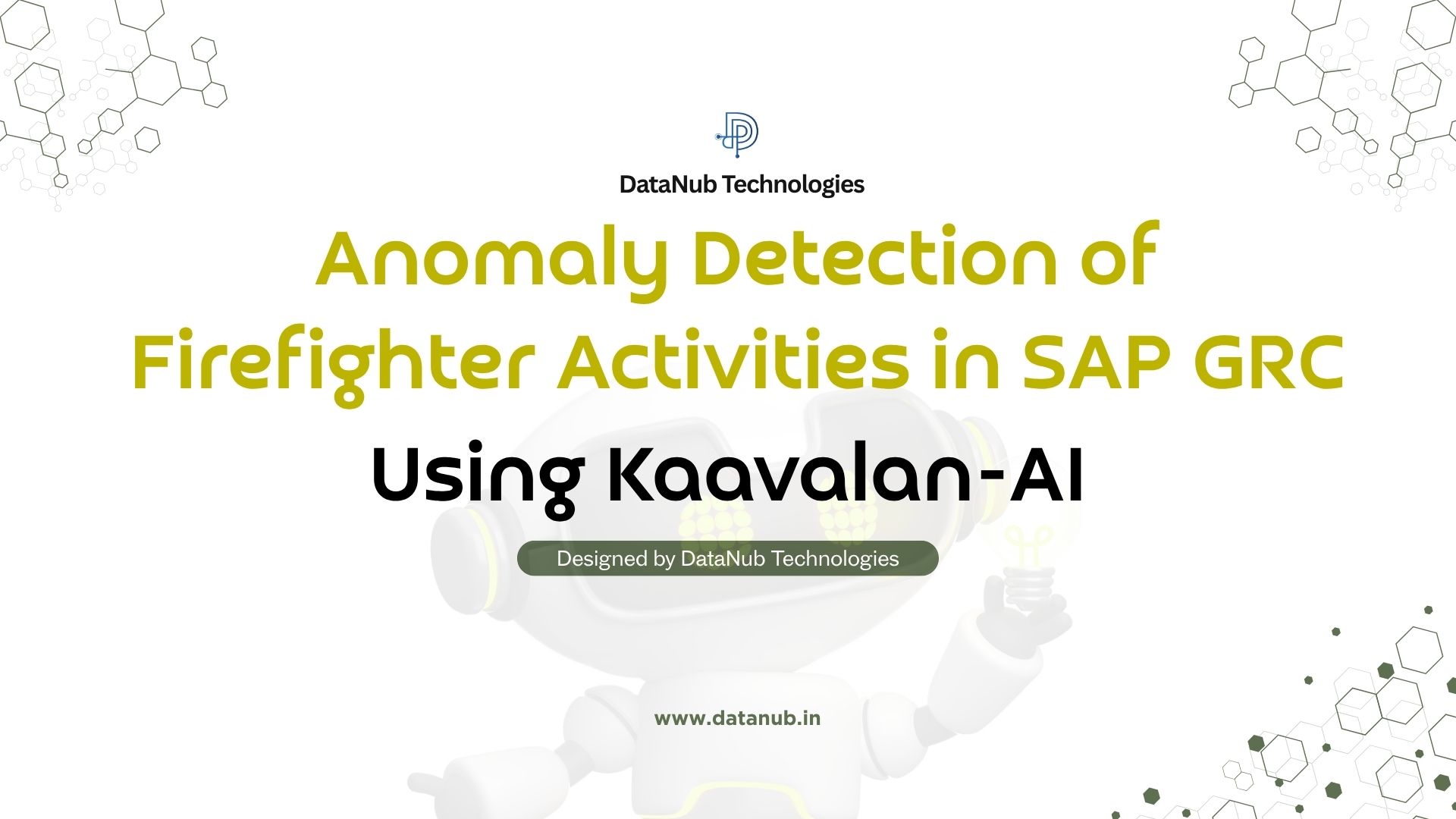- In an increasingly digital world, organizations rely heavily on robust security frameworks to safeguard their critical assets. SAP Governance, Risk, and Compliance (GRC) is a leading suite that provides tools to manage risks and ensure regulatory compliance within SAP environments. Among its many features, SAP GRC offers a powerful function known as “Firefighter”—a mechanism allowing users temporary elevated access for emergency or exceptional situations. While essential, this accessibility carries inherent risks, as misuse or anomalies in Firefighter activities can lead to security breaches, data loss, or compliance violations.
- Traditional monitoring methods often fall short in detecting sophisticated or subtle misuse patterns. As a result, organizations are turning to Artificial Intelligence (AI) to enhance anomaly detection, providing deeper insights, automated pattern recognition, and proactive alerts. This document explores the integration of AI for anomaly detection in Firefighter activities within SAP GRC, discussing its significance, methodologies, challenges, and future trend.Understanding Firefighter Activities in SAP GRC
Understanding Firefighter Activities in SAP GRC
Firefighter in SAP GRC is a critical component of the Emergency Access Management (EAM) module. It enables designated users (Firefighters) to temporarily assume privileged roles to perform urgent tasks that their normal roles do not permit. All activities performed under Firefighter IDs are logged, and post-activity reviews are mandated to ensure justification and appropriateness of the actions taken.
Activities may include:
- Resolving urgent production issues
- Performing critical configuration changes
- Executing emergency data corrections
- Accessing sensitive transaction codes
Given the elevated risks, continuous monitoring and timely anomaly detection in Firefighter activities are vital for maintaining compliance and security.
Risks Associated with Firefighter Activities
- Unauthorized Data Access: Misuse of Firefighter privileges can lead to unauthorized viewing, modification, or deletion of sensitive data.
- Bypassing Segregation of Duties (SoD): Emergency access may allow users to bypass established SoD controls, increasing fraud risk.
- Audit and Compliance Violations: Inadequate oversight can result in non-compliance with SOX, GDPR, and other regulations.
- Delayed Detection: Manual reviews and static rules may not capture subtle or evolving threat patterns.
Therefore, advanced anomaly detection mechanisms are essential to mitigate these risks.
DataNub Kaavalan-AI Solution
Artificial Intelligence, particularly machine learning (ML) and deep learning, has revolutionized the field of anomaly detection. Unlike traditional rule-based systems, AI can learn from historical data, recognize complex patterns, and adapt to changing user behaviours.
Key Advantages of Kaavalan-AI Anomaly Detection
- Pattern Recognition: our solution can discern normal and abnormal behaviour by analyzing vast sets of activity logs.
- Real-Time Alerts: our solution systems can issue real-time alerts for suspicious activities, reducing time to response.
- Adaptive Learning: our solution continuously evolve, improving detection accuracy over time.
- Reducing False Positives: By learning contextual nuances, our solution reduces unnecessary alerts and focuses on true anomalies.
How Our Solution Works?
Data Collection and Preprocessing
SAP GRC generates extensive logs of Firefighter activities, including user IDs, transaction codes, timestamps, accessed objects, and narrative comments.
- Extracting Logs: Automated extraction of Firefighter activity logs from SAP GRC.
- Data Cleansing: Remove duplicates, correct inconsistencies, and handle missing values.
- Feature Engineering: Derive meaningful features such as activity frequency, time of access, session duration, and variance from typical behaviour.
Supported Model Selection
- Unsupervised Learning: Techniques like clustering and autoencoders can identify deviations without labelled data. For example, activities that don’t fit established clusters may signal anomalies.
- Supervised Learning: If labelled data is available (i.e., flagged anomalies from past incidents), models like Random Forest, Gradient Boosting, or Neural Networks can be trained to classify new activities.
- Statistical Methods: Algorithms utilizing z-score, moving averages, or time-series forecasting can highlight unusual spikes or patterns.
- Hybrid Approaches: Combining unsupervised and supervised methods often yields optimal results, leveraging strengths of both paradigms.
Extension Option Available
- Embedding models in SAP GRC dashboards
- Automated notification and escalation workflows
- APIs for seamless integration with Security Operations Centres (SOC)
Use Cases and Examples
Our Solution which are deployed and effectively working in
- Unusual Access Patterns: A Firefighter ID is used at atypical hours or from unfamiliar locations, deviating from historical usage profiles.
- High-Risk Transaction Codes: Execution of seldom used or sensitive transaction codes that do not align with the stated emergency reason.
- Excessive Session Duration: Sessions lasting significantly longer than usual, potentially indicating unauthorized activities.
- Repeated Access Attempts: Multiple failed or repeated accesses, which could signal credential misuse or automation attack
Conclusion:
- AI-powered anomaly detection represents a transformative advancement in the oversight of Firefighter activities within SAP GRC. By leveraging machine learning, organizations can move from reactive monitoring to proactive risk mitigation, securing their SAP environments against abuse and compliance violations. As technologies mature and adoption widens, AI will continue to reshape the landscape of governance, risk, and compliance, ensuring that organizations can respond swiftly and intelligently to the ever-changing threat landscape

